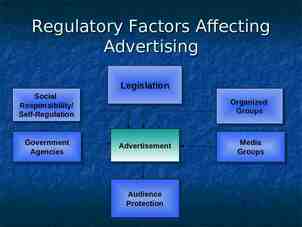COMPOSITES Created by: Michael Oyebode
15 Slides1.86 MB
COMPOSITES Created by: Michael Oyebode
WHAT IS A COMPOSITE? A complex material made of two or more separate substances.
TASK Split the A4 paper into 4 boxes. In the first box write a composite material Then move around the room filling other boxes from other students
AIMS OF THE LESSON To know the aesthetic, functional and mechanical properties, structural composition, application and advantages/disadvantages of composites.
OBJECTIVES OF THE LESSON To know the different types of composite materials To understand the aesthetic and mechanical properties of composites To understand the structural composition, application and manufacture of composites To know the advantages and disadvantages of composite materials
STARTER ACTIVITY Sample of different composite materials Discuss in your groups about the materials, and possible applications.
THE COMPOSITE MATERIALS YOU NEED TO KNOW ABOUT Medium-density fibreboard Glass fibre-reinforced plastics Carbon fibre reinforced plastics (CFRP) Chipboard
MEDIUM-DENSITY FIBREBOARD Medium-density fibreboard (MDF) is an engineered wood product made by breaking down hardwood or softwood residuals into wood fibres, combining it with wax and a resin binder, and forming panels by applying high temperature and pressure
GLASS FIBRE-REINFORCED PLASTICS Fibreglass is an excellent example of a relatively modern composite material (Invented in 1938 by Russel Games). In industry it is often referred to as Glass Reinforced Plastic (GRP). GRP is composed of strands of glass. Each individual glass fibre is very fine with a small diameter, and they are woven to form a flexible fabric. The fabric is normally placed in a mould, for instance a mould for a canoe and polyester resin is added, followed by a catalyst (to speed up the reaction).
3 SAMPLES OF DIFFERENT WEAVES OF FIBREGLASS The pattern of weave determines the strength and weight of the Glass Reinforced Plastic, after resin has been added. Different weaves have been developed for different practical applications.
CARBON FIBRE REINFORCED PLASTICS (CFRP) CFRP is sometimes referred to as Carbon Fibre Reinforced Plastic is similar to fibre glass. Carbon fibre is woven into a textile material and resin such as epoxy resin is applied and allowed to cure. The resulting material that is very strong as it has the best strength to weight ration of all construction materials. It is an improvement on glass fibre reinforced plastic, although much more expensive.
CHIPBOARD Chipboard is made by gluing together wood particles with an adhesive, under heat and pressure. This creates a rigid board with a relatively smooth surface. Chipboard is available in a number of densities: -normal, medium and high-density.
GLASS REINFORCED PLASTIC (GRP)APPLICATIONS, ADVANTAGES & DISADVANTAGES Composite Applications Advantages Disadvantages Glass reinforced plastic (GRP) Rotor blades of wind turbines Canoes Fish ponds Vehicle bodies Fairground rides Excellent strength to weight ratio Resistant to corrosion Water resistant Ideal for external structures Wide range of colours as pigments can be added to the resin Can be repaired easily Expensive material Specialised manufacturing process required High – quality mould needed
CARBON FIBRE APPLICATIONS, ADVANTAGES & DISADVANTAGES Composite Applications Advantages Carbon fibre Sports equipment Tennis racquets Fishing rods Bicycle frames Wheels Aircraft components Vehicle components Excellent strength to weight ratio Better tensile strength than steel alloys Can be formed into complex and aerodynamic onepiece structures distribute stress efficiently) Can be engineered to be anisotropic (to provide strength in specific areas of structure) Disadvantages Very expensive material Only available in black Highly specialised manufacturing processes required Cannot be easily repaired as structure loses integrity Cannot be easily recycled
MEDIUM – DENSITY FIBREBOARD (MDF) APPLICATIONS, ADVANTAGES & DISADVANTAGES Composite Applications Advantages Disadvantages Medium – density fibreboard (MDF) Flat – pack furniture General joinery work Moulds for forming processes Less expensive than natural timbers Available in large sheet sizes and range of thicknesses Isotropic(no grain), so no tendency to split Consistent strength in all directions Heavier (the resins are heavy) Requires appropriate finishes to seal surface fibres Swells and breaks when waterlogged Warps or expands if not sealed Contains ureaformaldehyde which may cause eye and lung irritation Dulls blades more quickly than many woods




















